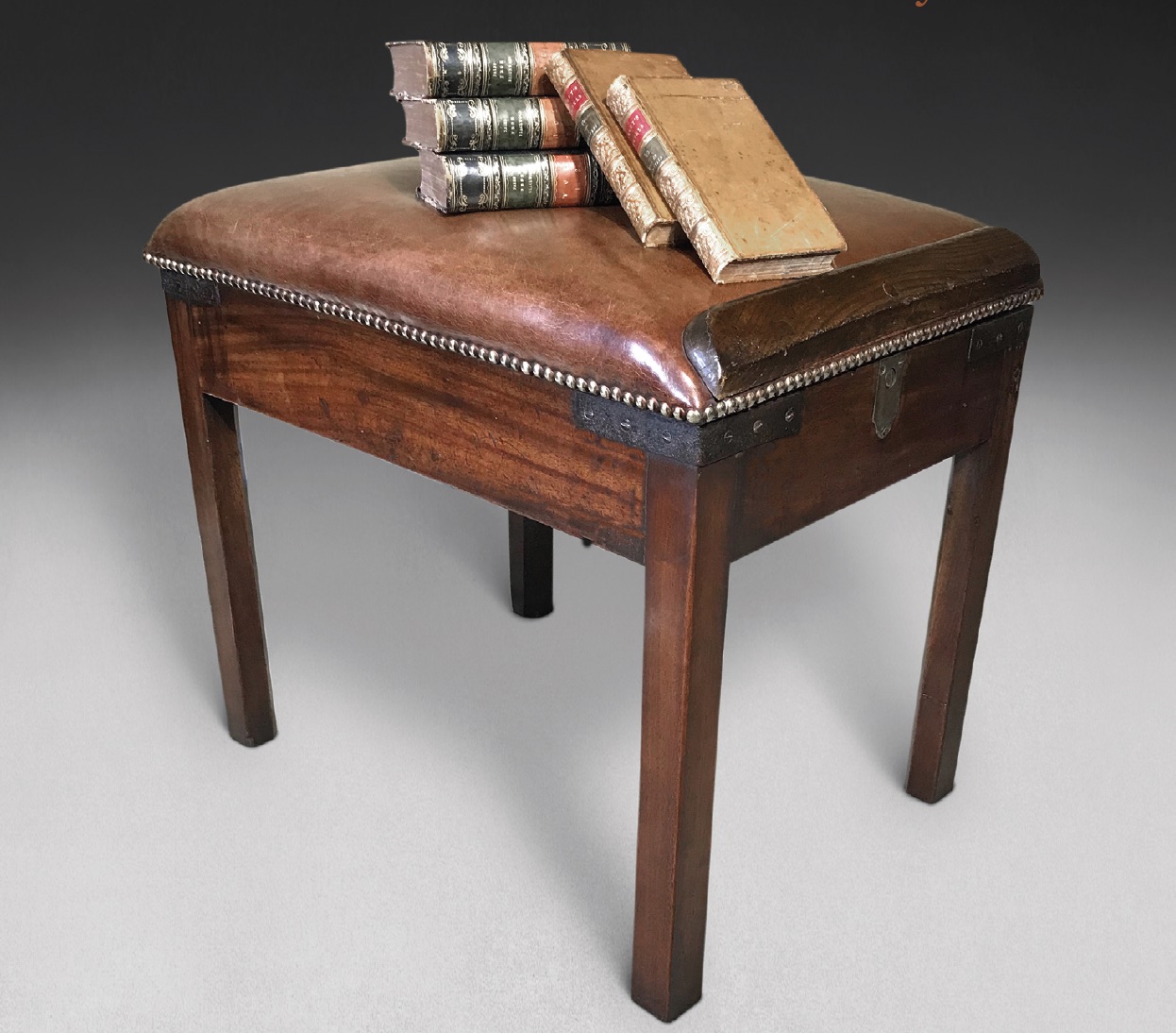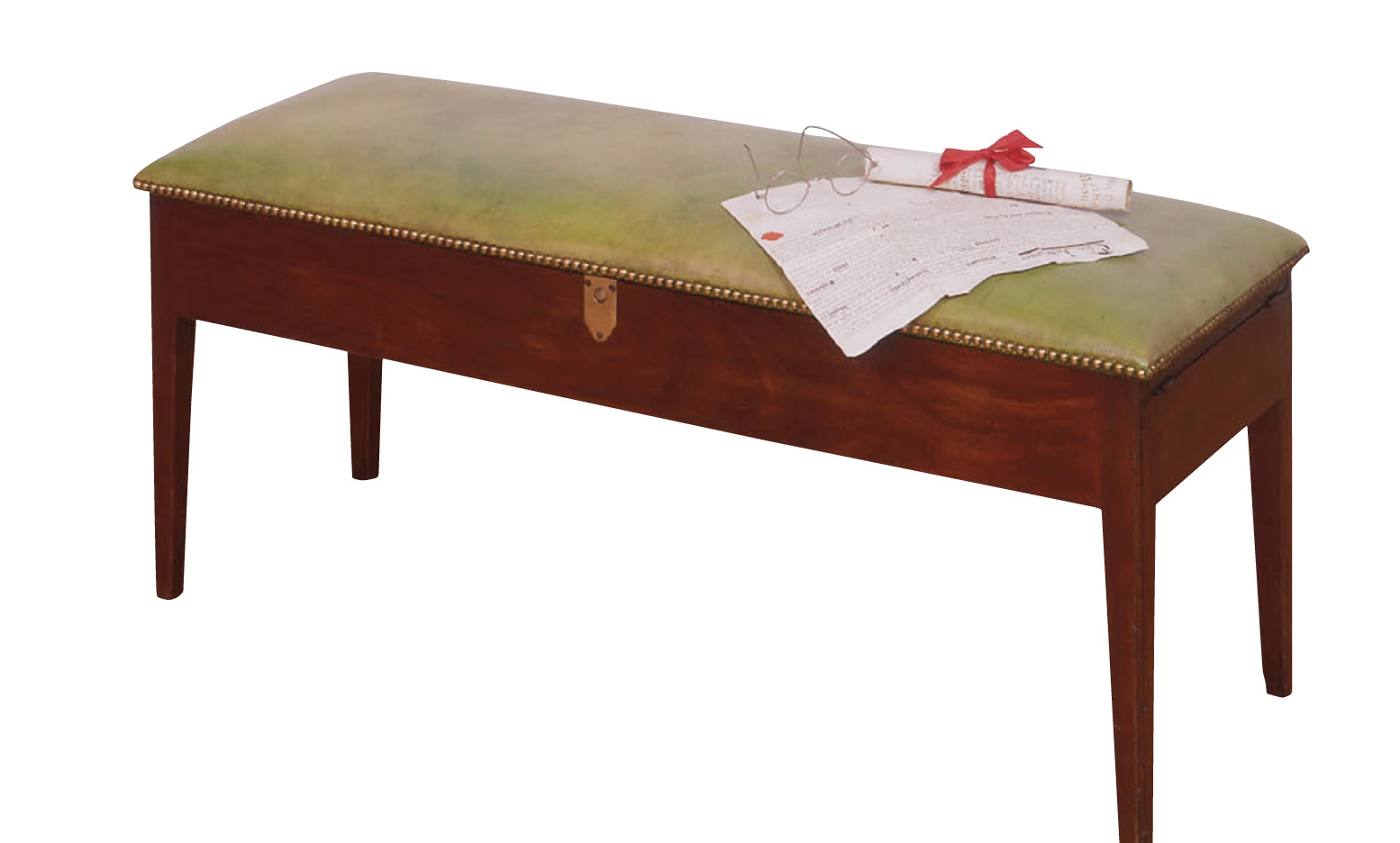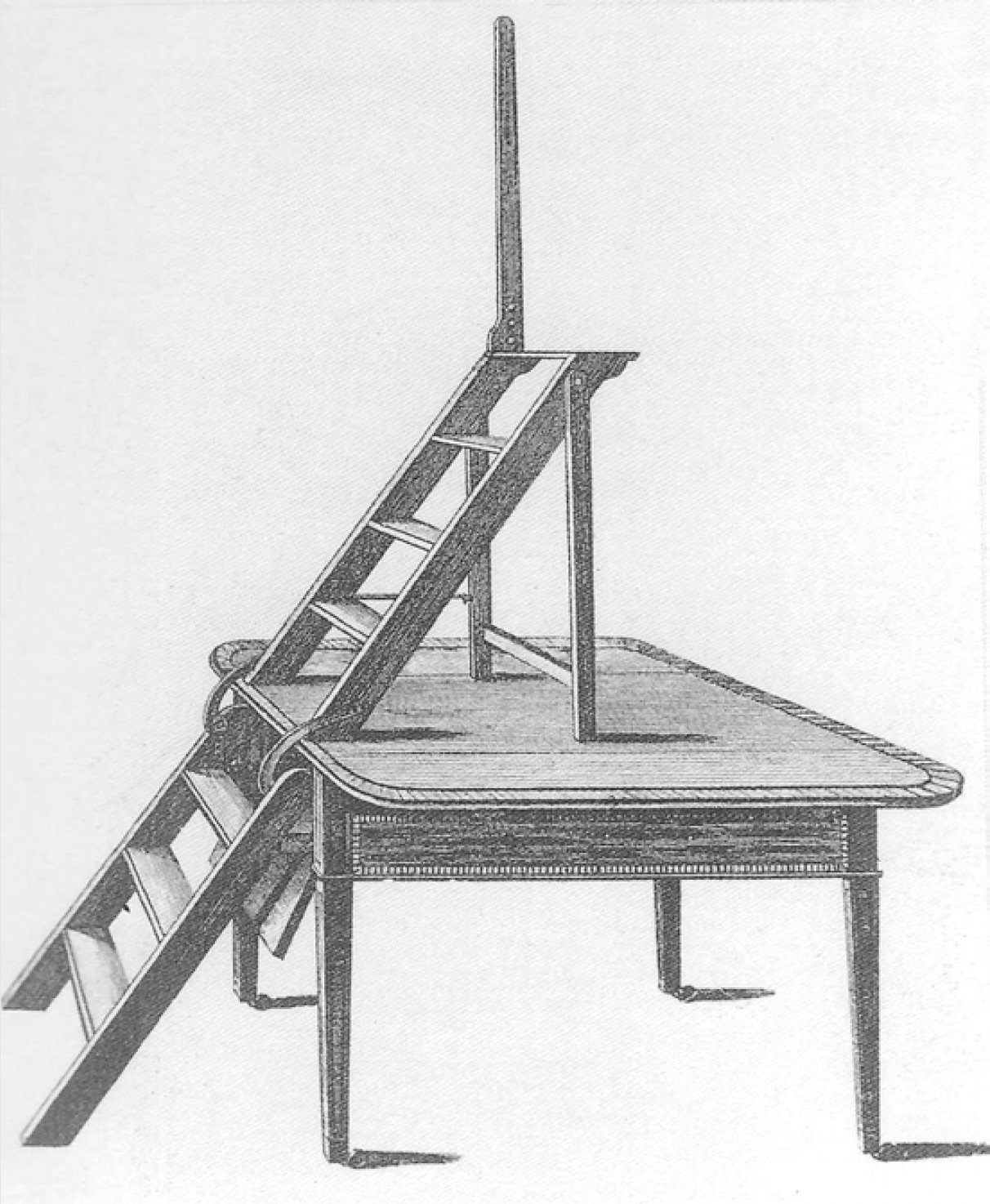A Guide to a metamorphic stool
David Harvey steps up to reveal how a meeting in a French car park led him to lift the lid on an unusual stool which houses a metamorphic secret in the shape of a set of steps
One of the advantages of having been in the antiques trade for so many years is that one develops an uncanny memory of pieces one has handled before. When looking at an item across a room I instinctively know who made it, generally by careful consideration of its form and construction.

Such was my reaction when I saw this recently-acquired stool (above) – even from afar.
The story started some 20 years ago when a gentleman phoned me from the continent with something for sale he was aware might interest me. He thought the piece in question (below) was a long piano stool, but one which opened in a most eccentric manner.

Cross-channel encounter
I was intrigued and arranged to meet him, and his stool, in the Calais Carrefour supermarket car park. Imagine, if you will, James Bond meets Maigret as we mobile-phoned our locations to each other to ensure we could transact the business in the huge multistorey.
We made the exchange – the stool for a cheque – and both went our ways. He to his bank and me (ecstatically) back to Witney via the Shuttle. The stool was indeed a set of metamorphic library
steps, the forerunner of my most recent acquisition.
Despite the similarites there could be up to 10 years difference in date between them. The more recently acquired stool has square-section, chamfered legs, often associated with the Chippendale period, while the longer ‘French’ stool (below) had square tapered legs dating it a few years later in style. Both have the same push-button brass release clips and leather cushioned stuff over seat with brass nailing around the edges.

Open and shut case
Once opened definitive evidence of both being the work of the same maker becomes apparent. The long stool (below) has seven treads, while the newly-acquired piece has only six. But when we look at the construction, hinges, shape etc. it appears they must be by the same team. When you see the same easel support for the upper treads, rounded corners to the steps and hinges, the match is confirmed.
Both are inlaid with a boxwood tablet inscribed with the name and address: Meschain & Hervé Fecit, No 32, John Street, Tottenham Court Road. Francois Hervé was a Frenchman living and working in London during the last quarter of the 18th century. He appears to have been in partnership with another Frenchman, a cabinet and chair maker by the name of John Meschain who supplied a set of chairs to Shelburne House in 1769.
His premises, at 32 John Street, were taken over by Hervé in 1781. They appear to have worked together during the 1770s as several sets of folding library steps exist inscribed with their names either on wooden or brass plaques. Hervé worked for a number of fashionable patrons, including the Prince of Wales, the Duke of Bedford, Earl Spencer and the Duke of Devonshire for whom he supplied several suites of seating furniture for Chatsworth House.

Georgian ingenuity
A few decades ago I had a further more elaborate example of these steps almost identical to an example carrying a plaque with Meschain & Hervé’s name and address on it which was illustrated in Christopher Gilbert’s 1996 book Pictorial Dictionary of Marked London Furniture, 1700-1840. I am always amazed at the sheer ingenuity of the Georgian cabinetmakers and their ability to surmount almost any problem by making an appropriate piece of furniture.
It has been a wonderful experience to have handled so many extraordinary pieces over the past 70 years here at Harvey & Co.
David Harvey is the owner of Witney-based W R Harvey & Co. (Antiques) Ltd. For more details go to the website www.wrharvey.com
Original design
The original design for these type of steps is attributed to Robert Campbell (1754–1793), a London maker who, in 1774, took out a patent on sets of library steps which could be: Contained in writing tables……or in any other tables, and in chairs or stools. The steps are contained in the frame of the table…. A Handrail and a desk may be attached to the upper flight. By a very similar method the patentee introduces steps into the frames of the seats and stools.

The practical nature of this piece of furniture meant it was highly sought after in every shape. A number of examples are known of library steps enclosed in tables which bear Robert Campbell’s trade label. One such, enclosed in a mahogany Pembroke table rather than a stool, is in the library at Saltram, Devon, and was supplied to John Parker in 1777 at a cost of £6 10s.
A label on the steps by Campbell bears the inscription: Library Steps, inclos’d in all kinds of Tables, Stools and Chairs…. MADE and SOLD only By ROB’T CAMPBELL.
Thomas Sheraton
His design was considered to have so much merit it was reproduced in Thomas Sheraton’s influential Drawing-Book in 1793, in which he writes: “Those masters however, who do not think it worth their while to be at the trouble of introducing any essential alteration in them may have these steps from Mr. Robert Campbell and Son, Mary-le-bone Street London, with a sufficient allowance for selling them again.”
Clearly any claim by Campbell for having the monopoly on such steps is wrong as demonstrated by the examples by Meschain & Hervé show.


